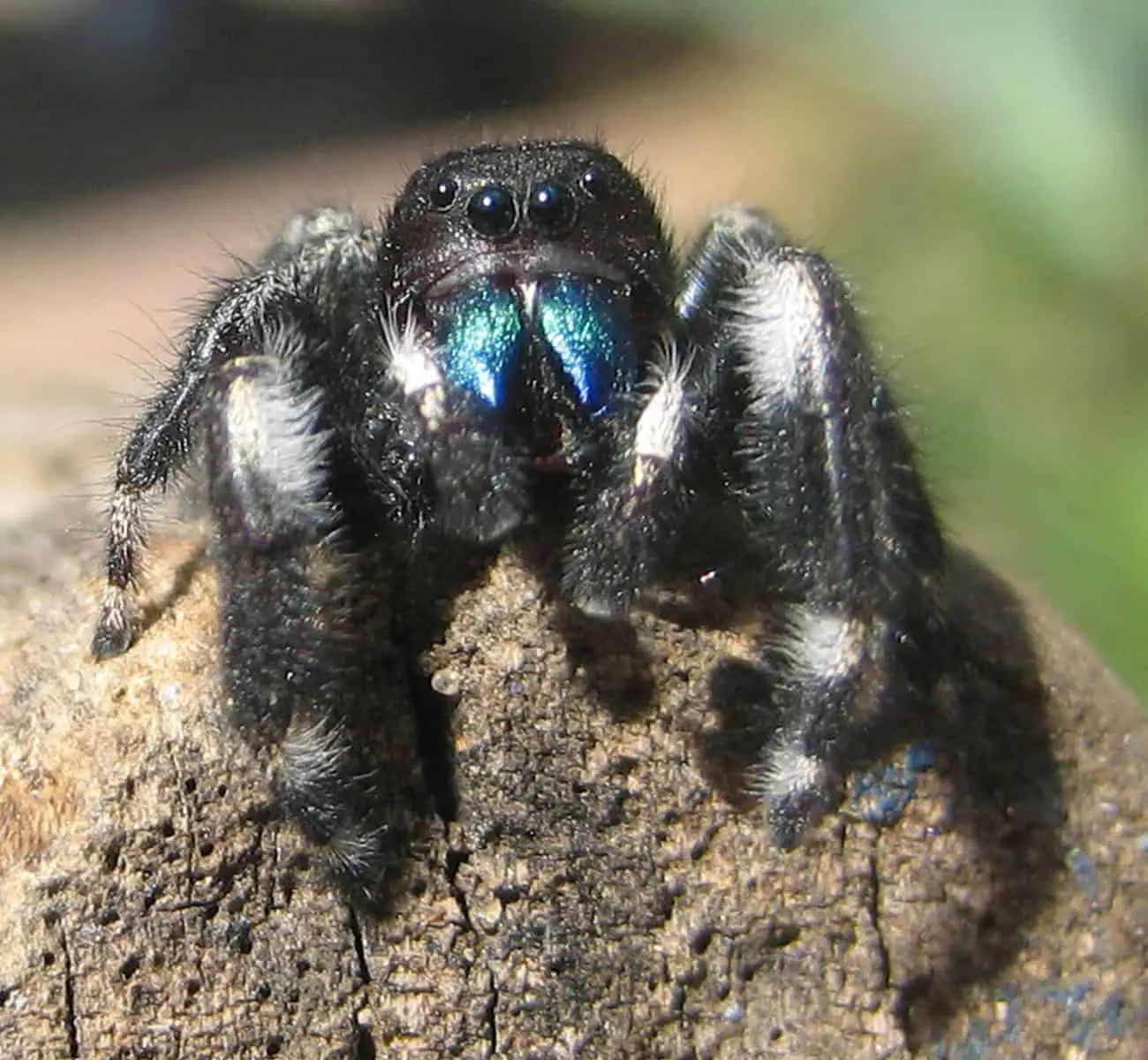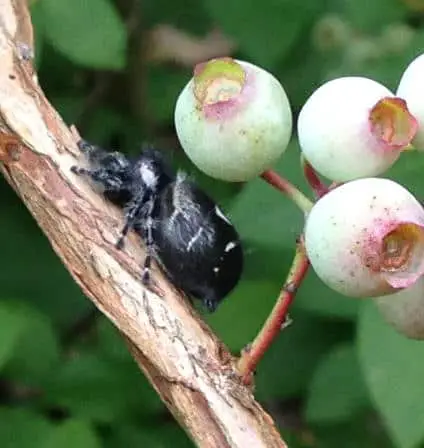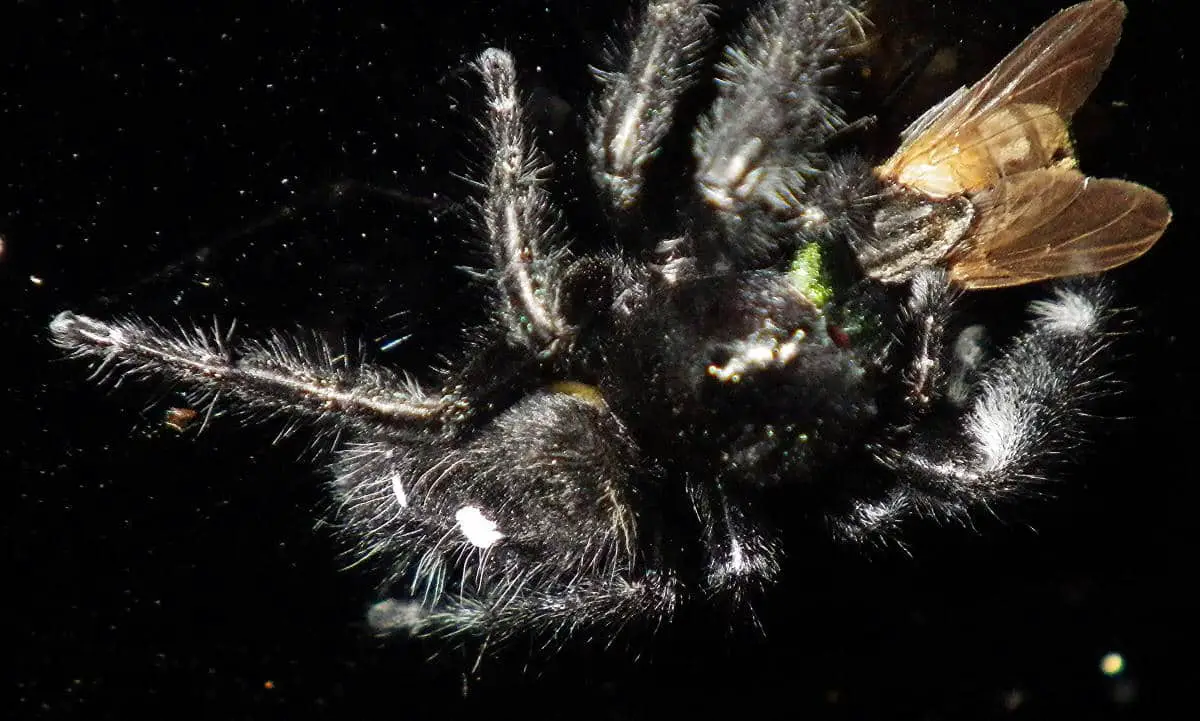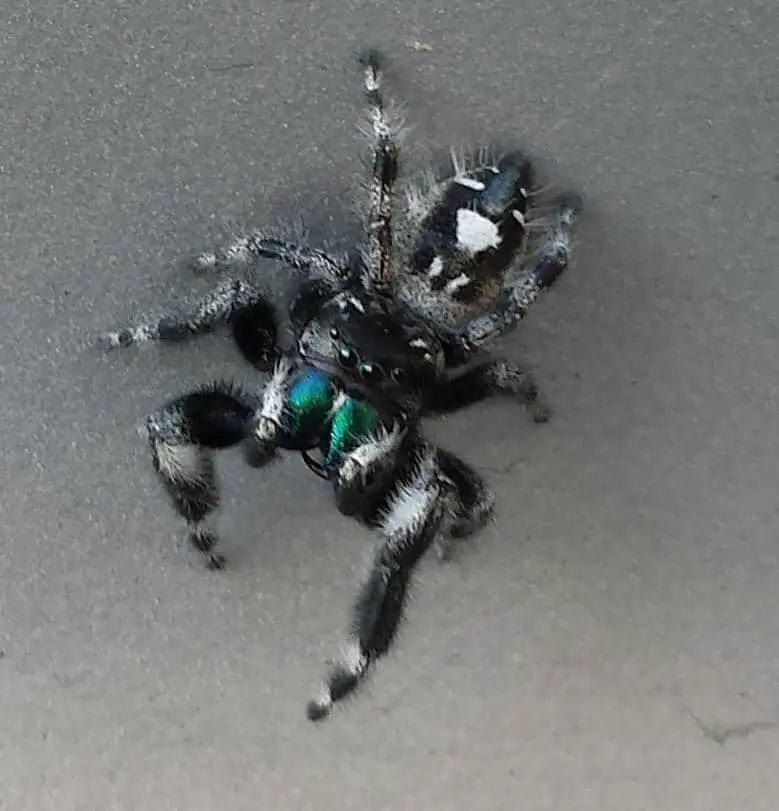The Daring Jumping Spider, Phidippus audax, is commonly found in gardens and homes. In the garden they can be found on tree trunks, fallen leaves and in ground debris and in homes where they wander in search of prey. They are often seen near windowsills and doorjambs. Daring jumping spiders are large, with males growing between a quarter and half an inch and females up to ¾-inch.
Their bodies are black or brown, stocky and hairy. The abdomen is marked with a white cross band and several grey or white spots. The chelicerae (the part containing the fangs) are a noticeable metallic green and this is the best way to identify this jumping spider.
The name “Jumping” spider comes from the behaviour of the male, who “jumps” during mating if the female approaches too quickly. These spiders like sunshine and do their hunting during the day. They walk with an irregular gait and leap on their prey and often eat other spiders as well as insects.
Even though they do not spin webs, jumping spiders can always be seen attached to a line of silk that protects them from falling should they miss their prey. Their excellent eyesight aids them in stalking prey, and their large appetites make them a beneficial resident of the garden. Even though they do not spin webs, jumping spiders can always be seen attached to a line of silk that protects them from falling should they miss their prey.The female uses this silk to make a retreat where she produces her egg sac and tends to it until the spiderlings hatch and disperse. Although scary looking, these spiders are not harmful to humans.
Here are some photos of daring jumping spiders sent in by viewers. You can enlarge them by clicking on them.































